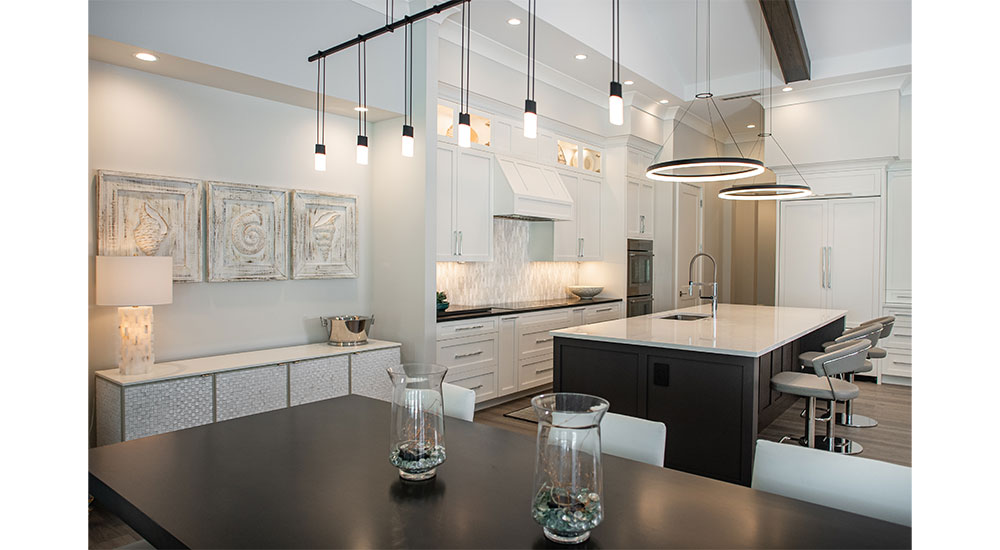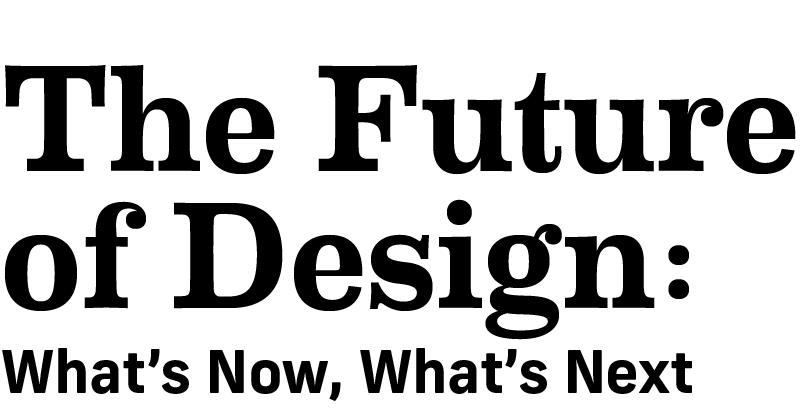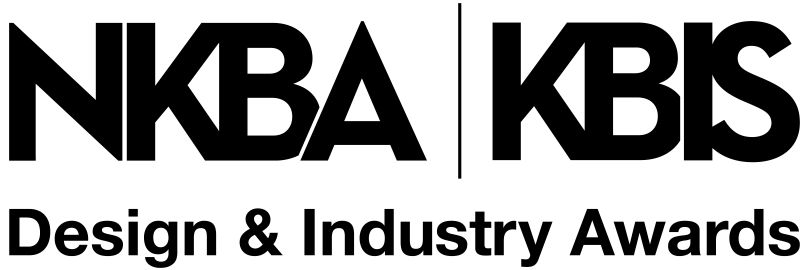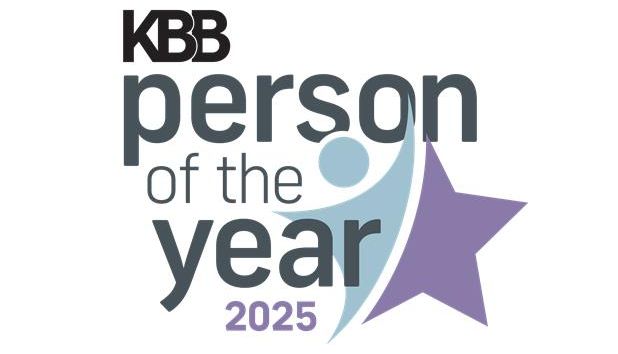In today’s wellness-driven design landscape, how lighting affects health and safety plays a far more powerful role than simply enhancing aesthetics; it’s essential to supporting physical health, emotional well-being and personal safety. Nowhere is this more crucial than in the kitchen and bath, two of the most high-functioning (and potentially hazardous) spaces in the home. Thoughtful lighting in these environments can help prevent injuries, regulate our sleep-wake cycles and support our overall quality of life.
Above photo: Layered lighting design enhances both safety and wellness in the kitchen by ensuring visibility at all task areas, reducing eye strain and contributing to the overall ambiance for better mental clarity and comfort. Project by Patricia Davis Brown; Photo credit: Stephanie Davis
Having worked in the interior design industry for 40 years, I’ve witnessed how lighting has transformed from an afterthought to a strategic tool in healthy home design. In many ways, it’s become one of the most important elements I consider in a project. The right lighting scheme can energize in the morning, calm the nervous system at night and help clients safely navigate their homes as they age in place.
Lighting & the Circadian Rhythm
The connection between lighting and our body’s natural circadian rhythm is well documented. Our bodies respond to changes in light to regulate everything from alertness to melatonin production. Exposure to bright, cool light in the morning helps us feel awake and focused, while warmer, dimmer light in the evening supports relaxation and prepares us for sleep.
Modern lighting solutions, such as tunable white lighting or smart systems that change color temperature throughout the day, can be programmed to mimic natural light patterns. This is particularly important in spaces like bathrooms, where clients often start and end their day. In a kitchen, adjusting the lighting tone for different times of day can boost productivity while also reducing eye strain and fatigue.
Prioritizing Safety in Design
Lighting is also critical for ensuring physical safety. Kitchens and bathrooms are common sites of household accidents, whether it’s a slip on a wet floor or an injury while preparing food. Well-designed task lighting over counters, stoves and sinks helps prevent mishaps by eliminating shadows and glare that could obscure knives or stovetops.
Under-cabinet lighting is one of my favorite design elements; not only does it enhance aesthetics, but it provides focused, shadow-free illumination right where it’s needed. Toe kick lighting is another strategic choice, offering a subtle glow at foot level to help users safely navigate during nighttime visits to the bathroom or kitchen without turning on overhead lights that may disrupt sleep.
Supporting Aging in Place
As homeowners age, visual acuity naturally declines. Lighting becomes even more important to maintain independence and prevent falls. I often recommend layered lighting systems that include general, task and accent lighting, all on separate controls. This allows users to adjust brightness based on their needs and time of day.
For aging clients or those designing with universal access in mind, I incorporate motion-sensor lighting, especially in hallways and bathrooms, and ensure light switches are placed at accessible heights. Non-glare fixtures, higher contrast between surfaces and thoughtful color rendering all play a role in enhancing safety and comfort.
The Emotional Impact of Light
Beyond the physical, lighting directly influences mental health. Bright, natural-feeling light can reduce symptoms of seasonal depression, anxiety and fatigue. In bathrooms, I often design lighting plans that allow for both functionality and ambiance; a cool, bright setting for morning routines and a softer, spa-like environment for winding down in the evening.
High color rendering index lighting ensures colors are true to life, which not only supports tasks like makeup application or cooking but also enhances emotional satisfaction with a space. No one wants to spend time in a bathroom mirror that makes them look washed out or cook in a kitchen where produce looks dull and unappetizing.
Technology for Wellness
Thanks to advances in smart home technology, lighting can now respond to the way we live. Voice-controlled lighting, app-based systems and pre-set mood scenes make it easier than ever to design for both health and convenience. I regularly recommend lighting systems that allow homeowners to shift lighting throughout the day with a single touch or automated schedule.
In kitchens and baths, integrating lighting with ventilation, music and mirror systems creates a comprehensive wellness environment. Imagine a bathroom that shifts to warm, relaxing light for your evening soak, then brightens up automatically when it’s time to start your day.
As designers, we’re not just shaping spaces; we’re shaping how people feel and function within them. When we consider lighting as an essential part of health and safety, we elevate our work from beautiful to truly life-enhancing.









